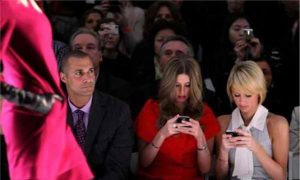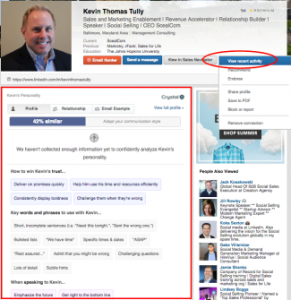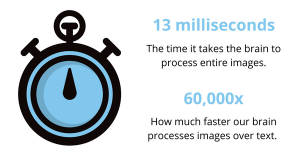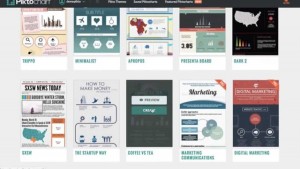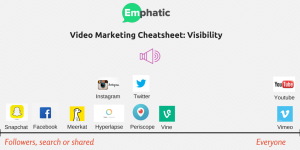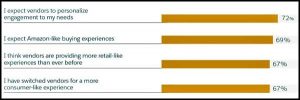When Frank Weishaupt became the CEO of Owl Labs in 2018, he had to adjust to a company where several employees worked remotely. Weishaupt had come from a background where everyone was expected to be in the office from 9 to 5. At the time, Owl Labs, the creator of a 360-degree video conferencing camera, was one of very few companies that had no specific requirement to be in the office. Weishaupt, despite being the boss, adapted to the culture he joined rather than forcing the company to operate the way he had previously.
Owl Labs may have been an outlier five years ago, but today, its model is emblematic of where the rest of the world is headed. “When I think of all the time I’ve spent in my life commuting—time I could have given back to my family, my health, and the company—hybrid makes sense,” says Weishaupt. Today, Owl Labs is still the epitome of “true hybrid” work: Employees come and go as they please. In practice, this looks like a fairly empty Monday and Friday in its headquarters outside Boston, and 25% to 50% capacity on Tuesdays, Wednesdays, and Thursdays.
According to the new McKinsey State of Organizations 2023 report, prior to the pandemic most organizations expected employees to spend at least 80% of their time in the office. Now, 90% of organizations are embracing hybrid work—creating policies and the infrastructure to support working in-person and remotely. Hybrid work offers several benefits: During the pandemic, 58% of executives saw productivity increase, McKinsey reports. In addition, remote jobs on LinkedIn received more than half of the total job applications even though they only accounted for 20% of the jobs posted.
The heart wants what the heart wants, and that’s a more flexible work environment. At Hubspot, the $20 billion market cap company which sells marketing and sales software, employees can choose what they want to do: 64% work remotely, 8% prefer to work from an office, and 28% choose flexible work. The company reported 33% revenue growth in 2022.
Yet there are still wrinkles that need to be worked out, as we’ve seen with companies issuing return to office mandates and managers complaining that “no one wants to work anymore” because they want to control workers or merely can’t conceive of a work culture that differs from how they came up in the corporate world. But as McKinsey notes, “By looking beyond the static definition of a “hybrid workspace”—home and office—and remaining open to the entire universe of options for how, when, and where employees work, “true hybrid” organizations can distinguish themselves as destination workplaces.” This is what “true hybrid” looks like now.
The challenges to get to true hybrid
When it comes to hybrid work, most companies are definitely a fan of being able to draw from a global talent pool. But that doesn’t mean that there aren’t challenges that need to be figured out, as Jeetu Patel, executive vice president and general manager of security and collaboration at Cisco, tells me. First, remote work employees can feel isolated, particularly if they are being projected on a screen while the rest of the team meets in person. Second, there are fewer opportunities for junior employees to observe senior employees and learn on the go.
Finally, remote meetings don’t create avenues for the kind of low-stakes conversation that can build deeper relationships. These relationships, in turn, are important for having robust debates that lead to better products and services as well as mentorship. According to a 2023 report from Hubspot, 33% of employees find relationship building to be the most significant challenge of a hybrid workplace culture.
Technology—as well as smart policies—can help solve that isolation impediment. Cisco, which has been innovating in the realm of teleconferencing for a couple of decades, is working on a host of new products to enable better audio and video in different work-from-home environments. Owl Labs creates video cameras that track who is speaking, centering their face, and as a result, the company saw its business grow tenfold over the pandemic. Owl Labs saw requests for additional features from different industries, such as how to lock the camera on one speaker’s face for a town-hall meeting.
Some companies are choosing not to wait for the ideal feature set to facilitate hybrid communications. Indeed, the global hiring platform, simply choose to side-step the issue by mandating that its customer-facing employees have to be in the office on Tuesdays and Wednesdays, so that new employees could be mentored by more experienced ones. Everyone else can choose when they want to come in, if they want to come in.
“Ironically, employees who don’t have to go in are coming in more often,” said CEO Chris Hyams. He also cited preliminary data that reveals the sales team is more productive and closes more deals on the days they are in office, although he speculates that this productivity probably would not increase if he mandates that employees return to office five days a week. “I think we’d have diminishing returns,” he says. “There’s a time when people need to come together, and a time when they need to do heads-down work.”
Training days
Those additional challenges of creating training opportunities and camaraderie can be more complicated to solve. GitLab, which runs a development, operations, and security platform, has been entirely remote since its inception in 2014, so the $4.7 billion market cap company uses a variety of techniques to train employees and make sure they are up to speed. First, it has a public handbook that’s 2,700 pages long that outlines its vision and strategy so everyone can literally be on the same page. Next, it has a policy of being as transparent as possible, with everyone encouraged to post publicly in its Slack workspace.
Finally—and not to be underrated—Gitlab also has a two-week program where any team member can shadow the CEO. “Everyone is more productive,” says Ashley Kramer, GitLab’s chief marketing and strategy officer. “But for it to work you have to be crisp about your goals. Our CEO has yearly objectives, we break it down to quarterly. That drives our alignment.”
In the service of camaraderie, companies are setting aside time and money for gatherings that are focused on relationship building. To this end, GitLab has a grant program for team members to meet up and go out to dinner or arrange offsites such as bowling or a day at Disneyland. Hubspot plans on hosting six events a year for employees to meet up and forge bonds. It also has a hybrid bring-your-family-to-work day. At Owl Labs, Weishaupt does rotating informal lunches with different remote teams in small groups so that he can get to know people.
But he notes this is a problem that no one has fully cracked the code for. “I’ve been very fortunate to have a great network of mentors who have helped me immensely. I worry about younger remote employees and how they’ll build that network. I’ve never found formal mentoring programs to be successful. Instead, we’re trying to inspire some of that in-person relationship building through quarterly in-person get-togethers so that when someone goes home, they feel comfortable making a personal phone call.”
Still, despite these issues, it’s clear that hybrid is here to stay, because it offers the best of both worlds: the focus and flexibility of remote, with the connection of in person. Indeed’s Hyams notes that employees actually do want to work from the office. “It’s the classic divide between workers and managers. Managers want people to go back to work because they think they’ll be more productive, but employees actually want to go back for connection,” he says.
Owl Labs’s Weishaupt says that the pandemic catalyzed a change that would have taken several decades to come. In the future, we might be discussing how to enable hybrid work through the metaverse, but for now, he says, we need to focus on how to make this viable for everyone. “All of our data says employees want flexibility,” he says. “If they don’t get it, they’ll search for another job. When you are running a company and things aren’t going the way you want them to, it’s tempting to look around and blame remote instead of the macro economy. But if you’re doing that, you’re looking in the wrong place.”

(4)

